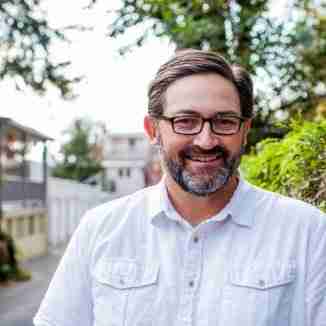
Industry Leaders Identify Key Growth Factors for Cell and Gene Therapy Market
At Maryland Lifesciences’ 2020 Bio Innovation Conference, American Gene Technologies (AGT) took center stage. AGT was the virtual event’s diamond sponsor, AGT’s CEO and Founder Jeff Galvin kicked off the event with opening remarks and then hosted several panel discussions, including “Expanding Progress and Opportunities in Gene and Cell Therapy,” which was a highlight of the conference’s second day.
Galvin has been one of the region’s most staunch and outspoken supporters for the BioHealth Capital Region (BHCR)’s cell and gene therapy industry, which is booming. Companies like AGT, Autolus, Kite Pharma, a Gilead Company, Catalent, MaxCyte, and RoosterBio, just to name a few, are all part of an expanding cell and gene therapy cluster that is starting to reshape the region.
With this growth in personalized medicine and advanced therapeutics comes new and different challenges for the region. Cell and gene therapy R&D and manufacturing requires advanced biomanufacturing facilities, skilled executive leadership and manufacturing talent, as well as unique supply chain and ecosystem support requirements.
Clearly, the BHCR has done an outstanding job attracting cell and gene therapies to the region. Now, the challenge is how can the BHCR foster growth and sustained success within such a new, cutting-edge and as of now commercially unproven field. (While there are hundreds of ongoing clinical trials in the U.S, there are only a handful of cell and gene therapy products that have been approved for commercial use by the U.S. Food and Drug Administration).
To explore these challenges and other issues within the space, Jeff Galvin moderated a panel that included some of the leading cell and gene therapy minds. The session entitled, “Expanding Progress and Opportunities in Gene and Cell Therapy,” included panelists Dawn Driscoll, Chief Executive Officer of Cell Therapies Pty Ltd; Bill Enright, CEO at Vaccitech; and Jon Rowley, the Founder, and Chief Product Officer at RoosterBio, Inc.
Here are some highlights from their engaging, lively and wide-ranging discussion about the state of the cell and gene therapy industry.
The Maryland Stem Cell Research Fund (MSCRF) Will Continue to Play a Key Role in the Cell and Gene Therapy Cluster’s Development and Growth
Established in 2006 as part of the Maryland Stem Cell Research Act, the Maryland Stem Cell Research Fund (MSCRF) promotes “…state-funded human stem cell research and medical treatments through grants to public and private entities in the state.” The MSCRF offers six funding programs for various organizations/individuals at varying stages of their development.
The Maryland Technology Development Corporation (TEDCO) managed fund is designed to accelerate research and commercialization of human stem cell-based technologies. The MSCRF has played an important role in the BHCR becoming a thriving hub for personalized medicine, including cell and gene therapy companies, which has brought more advanced biomanufacturing capabilities into the state.
In 2020, The Maryland Stem Cell Research Commission (The Commission) announced $8.3M MSRCF grant awards across two funding rounds. MSCRF has awarded $157M in funding to BHCR companies seeking to accelerate stem cell research, therapies, and commercialization of products since 2007. Recent MSCRF funding recipients include Frederick, Maryland’s RoosterBio, Inc., Theradaptive, and Baltimore’s Neoprogen.
“The MSCRF is already doing a lot for the field. Recently they put together funds specifically to help the industry focused on product development and clinical trials… there are lots of opportunities there. We’ve benefitted from two grants from the MSCRF on the product development side and we successfully launched two products with this funding,” stated Rowley.
“We have a strong manufacturing footprint in Maryland and many want to see the area as THE home for cell and gene therapy manufacturing. I would say if MSCRF could do anything more it would be in continuing the product development aspect of their program and aligning some of the funding toward manufacturing and workforce development,” he added.
Cell and Gene Therapy Platform Technology Can Offer Broad Applications, More Opportunity for Commercialization
Bill Enright of Vaccitech spoke about the broad number of indications that the company’s platform could potentially address. Vaccitech’s prime-boost platform has the potential to target cancers and viruses.
“The nice thing about having a platform technology is the broad applicability. We’re able to generate T Cell responses in a balanced way against these diseases. It offers us the potential for a functional cure for Hepatitis B and the clearance of Human Papillomavirus (HPV), for example,” stated Enright.
AGT is a platform company like Vaccitech, with broad potential therapeutic applications.
“Our platform is a bunch of different lentiviral components…over 12 years we’ve generated a lot of intellectual property around how to ensure good expression of a transgene in a targeted manner to specific parts of the body in a safe way,” stated Galvin. “We have a platform in infectious disease and immuno oncology as well. We are starting to see development costs falling while the efficiency and productivity in manufacturing is going up.”
Other cell and gene therapy platforms in development typically have multiple indications they can target, which is beneficial not only to the companies developing them, but also for the regions where they are located. Cell and gene therapy platforms with broad applications could increase the number of products with commercial potential emerging from the BHCR, ultimately increasing the number of therapies on the market to help more patients in need.
Mesenchymal Stem Cells (MSCs) Important to Future of Cell and Gene Therapy
MSCs are stem cells located in bone marrow and have an ability to home in and target certain parts of the body.
“When you get an injury to the body…an injury signal gets sent out and MSCs receive these signals, migrate out of the bone marrow and then home to the injury. MSCs then orchestrate tissue regeneration,” stated Rowley. “MSCs are tissue repair cell orchestrators.”
“Clinicians can’t get MSCs in large quantities, but the cell therapy developers have figured out how to expand them ex vivo and then overwhelm the injury site via infusion or injection. MSCs are safe, manufacturing has largely been figured out and they home to the site of injury,” he added. “This is the regenerative medicine hammer and MSCs are being tried in many different indications. With gene editing and engineering becoming so democratized and widely used, there is a ton of opportunity with MSCs,” he added.
Rowley gave an example of a genetically engineered MSC being deployed against COVID-19, illustrating the flexibility and broad applicability of cell therapy. The company utilized RoosterBio’s off-the-shelf cell bank to develop the MSC for COVID-19.
“Everything is there with MSCs and other cell types to accelerate proof-of-concept and product development,” Rowley stated.
The COVID-19 Pandemic Has Opened Up BHCR Cell and Gene Therapy Developers to Overseas CMO Support
The cell and gene therapy development and manufacturing support ecosystem within the BHCR is growing but still not completely developed. And with the outbreak of the pandemic, many companies with ongoing research projects or clinical trials had to put them on hold or move these processes to a virtual setting. Virtual clinical trials became a reality in the COVID-19 new normal, as did an increased openness to reaching out for development and clinical trial support overseas, particularly in areas with less of a COVID-19 impact and more advantageous trial environments, like Australia, for example.
Cell Therapies Pty’s Ltd. is a Contract Manufacturing Organization (CMO) headquartered in Australia with deep experience in GMP-manufacturing of cell-based products. The company offers an end-to-end portfolio of services to help develop and commercialize life-changing treatments with the potential to dramatically improve patient outcomes.
“We have a very large number of clients and collaboration in the U.S. Our goal is to get our clients’ products on the market and through regulatory phases with the best data and CMC package we can get. We want to get products that are approvable and reimbursable,” stated Cell Therapies’ CEO Dawn Driscoll. “We are very comfortable working remotely and doing lots and lots of video calls.”
“One of our clients is Novartis. We are in the end stages of tech transfer and will be launching manufacturing for Chemria in Australia and other countries. When someone has their non-GMP process worked out and they have a good idea how to control that process…that’s really the ideal time for people to reach out to us,” she added.
The BHCR has a blossoming cell and gene therapy cluster and is rapidly becoming the region of choice for acquiring and building advanced biomanufacturing facilities.
Many challenges remain for the cell and gene therapy field globally and within the BHCR. Continued support of the growing ecosystem via the region’s funds, strong workforce development, further development of cell and gene therapy platforms with broad indication potential, leveraging the power of MSCs and seeking outside resources when necessary are some of the keys to the BHRC cell and gene therapy hub’s future success.
- About the Author
- Latest Posts
Steve brings nearly twenty years of experience in marketing and content creation to the WorkForce Genetics team. He loves writing engaging content and working with partners, companies, and individuals to share their unique stories and showcase their work. Steve holds a BA in English from Providence College and an MA in American Literature from Montclair State University. He lives in Frederick, Maryland with his wife, two sons, and the family dog.





